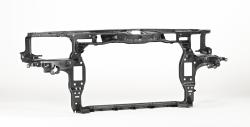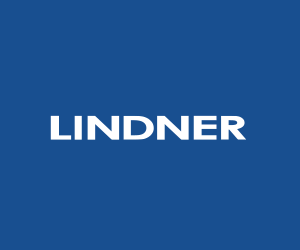plasticker-News
| 2010-11-08 |

|
LANXESS: 20 percent less weight in the front end of the Audi A8
|
Close development partnership between Audi, Magna, LANXESS and Bond-Laminates The additional stiffness of the plastic-metal composite technology used in the front end of the Audi A8 not only makes the vehicle lighter, but also safer and more comfortable. For the first time, this hybrid component uses lightweight organic sheets in addition to aluminum. The lightweight material is used to create a 1.0-mm-thin U-section on the lower beam of the hybrid front end. Compared with its aluminum equivalent, it weighs 20 percent less. The innovative hybrid component is the result of close cooperation between automakers, system suppliers and raw materials producers. It is produced by Magna Decoma Exterior Systems GmbH, a subsidiary of Magna International Inc. based in Obertshausen near Frankfurt, Germany. Bond-Laminates GmbH from Brilon, Germany, supplies the semi-finished organic sheet, and a customized polyamide 6 Durethan from specialty chemicals company LANXESS is used in the organic sheet and the injection molding process. Magna undertook the mechanical design of the organic sheet hybrid front end in accordance with technical specifications. This was preceded by the development of a prototype that was reinforced solely by aluminum sheet. “For quite some time, we have been developing concepts designed to harness the potential of lightweight organic sheets in the series production of structural bodywork components. Our accumulated findings and experience persuaded Audi AG to replace the aluminum sheet in its lower beam with an organic sheet,” explains Gottfried Sailer, Head of the Front End Systems Development Center at Magna Decoma in Altbach, Germany. The stringent demands in terms of strength and stiffness proved particularly challenging. The new structural concept incorporates a double torsion ring that increases the stiffness of the front end of the vehicle significantly. In the event of a head-on collision, the resulting forces are distributed across three load planes and four load paths, thus maximizing safety. To produce the hybrid front end, the semi-finished organic sheet is first formed separately before being inserted in the injection mold along with three aluminum sheets. The sheets are then overmolded with reinforcements and ribbing in Durethan BKV 30 EF. “Our easy-flow polyamide 6, which is reinforced with 30 percent glass fibers, can be processed at low injection pressures and temperatures. It can be used for thin walls and minimizes warpage and shrinkage,” comments Ulrich Dajek, a design expert in the Semi-Crystalline Products business unit at LANXESS. LANXESS supported Magna Decoma every step of the way in the construction process. It helped calculate the optimum position for the polyamide reinforcing ribs, minimize warpage using rheological calculations and determine the right position of the injection points. Bond-Laminates helped optimize the forming of the semi-finished organic sheets and the adhesion between the organic sheet and the injection molding material. Magna Decoma, a system developer and supplier whose products include hybrid front end carriers and complete front end modules, has acquired extensive expertise in the forming of organic sheets and knows how they can be cost-effectively made into hybrid components in series production using a stable injection molding process. Going forward, the development partners all agree that, under specific conditions, the entire production process could be made even more effective by relocating the forming of the organic sheet, which has been performed separately till now, into the injection mold. Crucial performance indicators in this process are the capacity utilization of the production facilities and production flexibility. As well as providing significant potential for weight reduction and functional integration, another incentive for using organic sheets in hybrid technology is that metal-free structural components can be produced as pure “plastic designs”. This type of component no longer has to be protected against corrosion and thus generates even more potential savings, while simplifying the bodywork production process. Organic sheet hybrid technology is not just restricted to use in the front end of a vehicle. It can be used in any part of the bodywork that needs to be strong and absorb a lot of crash energy – like, for example, frame components for panoramic roofs. Another promising field of application could be reinforcing functional modules for doors and hatches with integrated mounts for locks and grips, guides for electric windows and various fasteners. More information: lanxess.com, www.magna.com |
LANXESS AG, Leverkusen, Germany
 back to news list back to news list |  back to top back to top |











